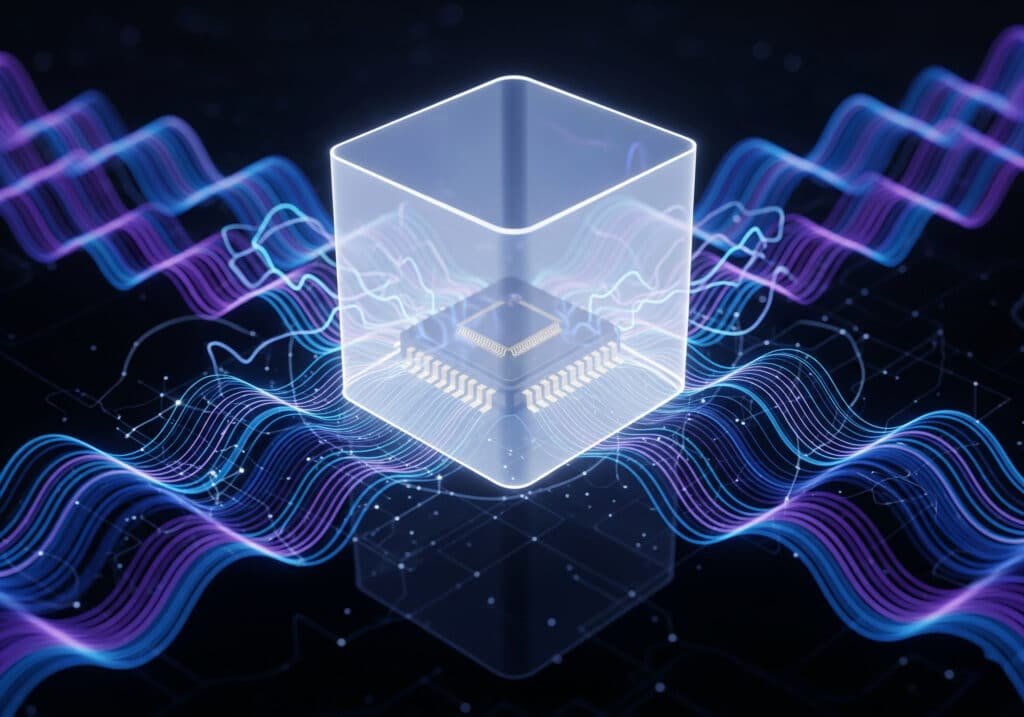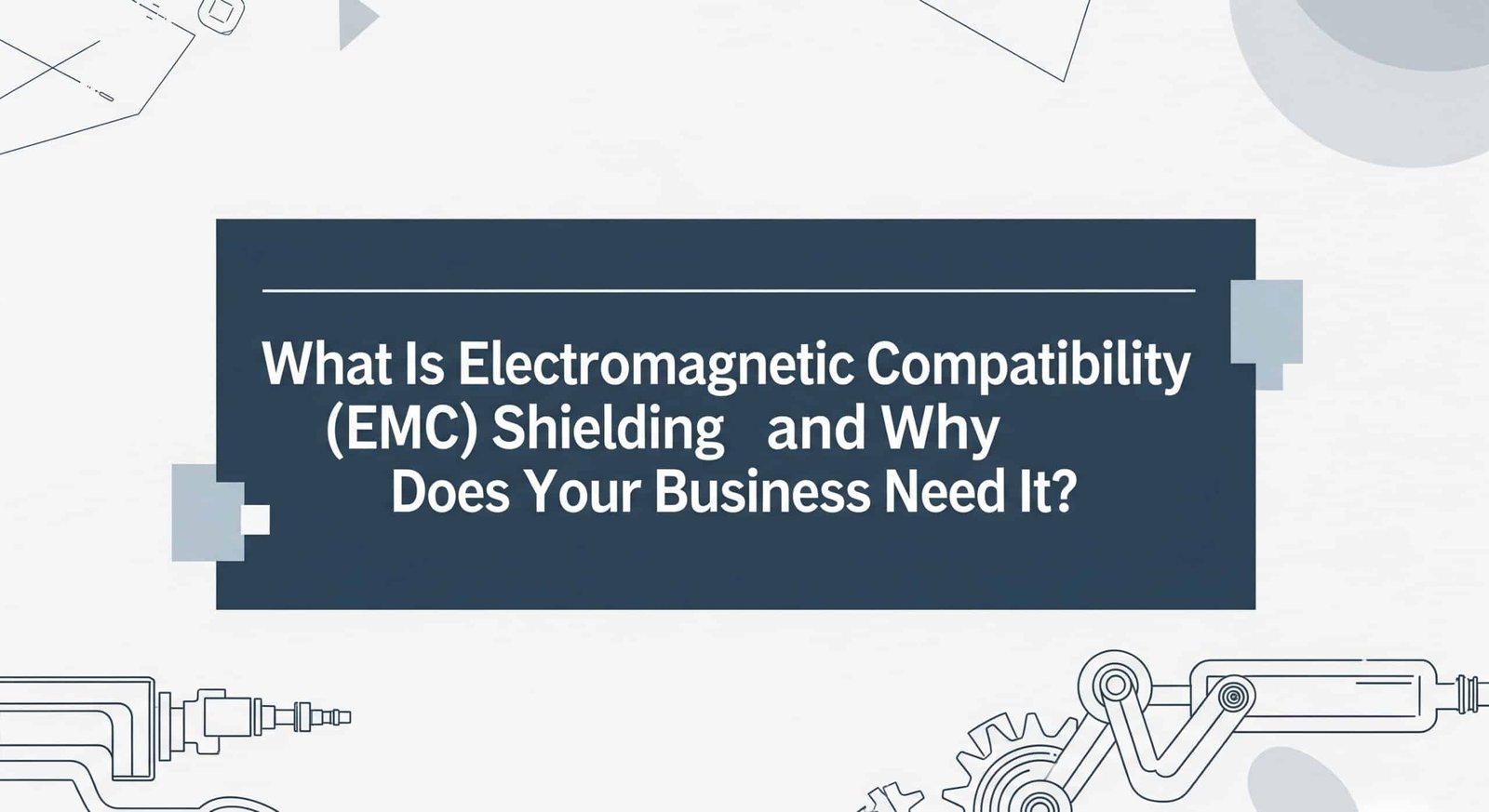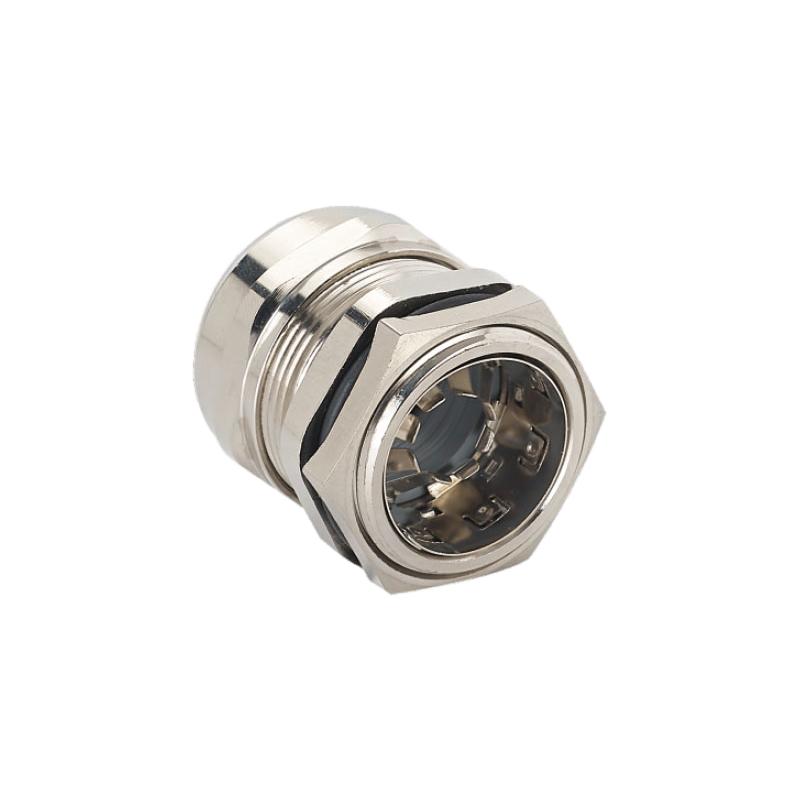Introduction
Ever wondered why your critical equipment suddenly malfunctions when other devices are nearby? You’re not alone. Electromagnetic interference (EMI)1 costs businesses millions annually through equipment failures, production downtime, and compliance violations. EMC shielding is a protective technology that prevents electromagnetic interference between electronic devices, ensuring reliable operation and regulatory compliance. As Chuck, Sales Director at Bepto Connector, I’ve witnessed firsthand how proper EMC shielding transforms chaotic industrial environments into harmonious, efficient operations. Let me share why this technology might be the missing piece in your operational puzzle.
Table of Contents
- What Is EMC Shielding and How Does It Work?
- Why Is EMC Shielding Critical for Modern Industries?
- What Are the Main Types of EMC Shielding Solutions?
- How Do You Choose the Right EMC Shielding Strategy?
- What Are Common EMC Shielding Implementation Challenges?
- FAQs About EMC Shielding
What Is EMC Shielding and How Does It Work?
Think of EMC shielding as an invisible bodyguard for your electronic equipment. EMC (Electromagnetic Compatibility) shielding is a barrier technology that blocks, absorbs, or redirects electromagnetic energy to prevent interference between electronic devices.

The Science Behind EMC Protection
EMC shielding operates on three fundamental principles:
Reflection: Conductive materials like copper, aluminum, or specialized alloys reflect electromagnetic waves away from sensitive equipment. This is particularly effective for high-frequency interference.
Absorption: Magnetic materials absorb electromagnetic energy and convert it to heat. This method works excellently for low-frequency magnetic fields.
Multiple Reflections: Advanced shielding combines multiple layers, creating a maze-like path that weakens electromagnetic waves through repeated reflections.
Real-World EMC Success Story
Last month, David, a procurement manager from a major automotive manufacturer in Detroit, contacted us in panic. His production line was experiencing random shutdowns whenever the nearby welding station operated. “Chuck, we’re losing $50,000 per hour when this line stops,” he said urgently.
We implemented our EMC cable glands with 360-degree shielding continuity throughout their control cabinet connections. The result? Zero interference incidents in the following three months, saving them over $2 million in potential losses. David later told me, “Your EMC solution didn’t just fix our problem – it gave us peace of mind.” 😊
Why Is EMC Shielding Critical for Modern Industries?
The digital transformation has made EMC shielding more crucial than ever. Modern industrial environments are electromagnetic battlefields where dozens of devices compete for the same frequency spectrum.
Regulatory Compliance Requirements
Every major market has strict EMC regulations:
- Europe: CE marking requires EMC Directive 2014/30/EU2 compliance
- North America: FCC Part 153 and Industry Canada standards
- Asia-Pacific: Individual country standards based on IEC/CISPR guidelines
Non-compliance isn’t just about fines – it means market exclusion and reputation damage.
Industry-Specific EMC Challenges
| Industry | Primary EMC Concerns | Typical Solutions |
|---|---|---|
| Automotive | Engine control interference | EMC cable glands, shielded harnesses |
| Medical | Patient safety, device accuracy | Hospital-grade EMC enclosures |
| Aerospace | Navigation system reliability | Mil-spec EMC components |
| Industrial | Process control stability | 360-degree EMC continuity |
The Hidden Costs of Poor EMC Design
Beyond obvious equipment failures, poor EMC design causes:
- Intermittent faults: The most expensive to diagnose and fix
- Reduced equipment lifespan: Constant interference stress accelerates wear
- Data corruption: In control systems, this can be catastrophic
- Safety incidents: When safety systems fail due to interference
What Are the Main Types of EMC Shielding Solutions?
Understanding your shielding options helps you make informed decisions. The three primary EMC shielding approaches are enclosure shielding, cable shielding, and component-level shielding.

Enclosure-Level Shielding
Complete equipment enclosures provide comprehensive protection but require careful attention to:
- Seam continuity: Every joint must maintain electrical contact
- Aperture management: Ventilation holes, displays, and connectors need special treatment
- Gasket selection: Conductive gaskets maintain shielding at removable panels
Cable-Level Shielding
This is where Bepto excels. Our EMC cable glands ensure shielding continuity from equipment to equipment:
Braided Shield Termination: Our patented design maintains 360-degree contact with cable shields, preventing the “pigtail effect” that compromises shielding effectiveness.
Multiple Entry Solutions: For complex installations, our multi-hole EMC glands allow several cables while maintaining individual shield integrity.
Environmental Protection: All our EMC solutions maintain IP68 sealing, protecting against moisture while preserving electromagnetic performance.
Component-Level Shielding
Individual components like filters, suppressors, and shielded connectors provide targeted protection where full enclosure shielding isn’t practical.
How Do You Choose the Right EMC Shielding Strategy?
Selecting appropriate EMC shielding requires systematic analysis. Effective EMC strategy balances protection requirements, cost constraints, and practical implementation considerations.
Step 1: Threat Assessment
Identify your electromagnetic environment:
- Frequency spectrum analysis: What frequencies are present?
- Source identification: Internal vs. external interference sources
- Susceptibility testing: Which equipment is most vulnerable?
Step 2: Performance Requirements
Define your protection goals:
- Shielding effectiveness4: Typically 40-120 dB depending on application
- Frequency range: Different materials excel at different frequencies
- Environmental conditions: Temperature, humidity, vibration effects
Step 3: Implementation Strategy
Consider practical factors:
- Installation complexity: Some solutions require specialized expertise
- Maintenance requirements: Gaskets and connections need periodic inspection
- Future expansion: Design for potential system growth
Customer Success: Chemical Plant EMC Upgrade
Hassan, operations director of a petrochemical facility in Saudi Arabia, faced a unique challenge. His new digital control system was interfering with safety shutdown systems – a potentially catastrophic situation.
“Chuck, we need bulletproof EMC protection,” Hassan emphasized during our site visit. “There’s zero tolerance for failure in our industry.”
We designed a comprehensive solution using our explosion-proof EMC cable glands combined with specialized grounding techniques. The installation required ATEX certification and withstood rigorous third-party testing.
Six months later, Hassan reported: “Your EMC system has been flawless. We’ve had zero interference incidents, and our safety systems perform better than ever. The investment paid for itself through improved reliability.”
What Are Common EMC Shielding Implementation Challenges?
Even the best EMC designs can fail due to implementation issues. The most common EMC shielding failures result from poor installation practices rather than inadequate component specifications.
Installation Pitfalls to Avoid
Grounding Loops5: Multiple ground paths can create circulating currents that worsen EMC performance. Our technical team provides detailed grounding diagrams to prevent this issue.
Shield Discontinuity: Any break in shielding continuity creates an antenna effect. This is why our EMC cable glands feature 360-degree clamping mechanisms.
Corrosion Issues: Dissimilar metals in contact create galvanic corrosion, degrading shielding over time. We specify compatible materials and protective coatings.
Testing and Validation
Proper EMC implementation requires verification:
- Pre-compliance testing: Identify issues before formal certification
- Installation verification: Ensure shielding continuity after installation
- Periodic maintenance: Schedule regular inspection of critical connections
Conclusion
EMC shielding isn’t just about regulatory compliance – it’s about operational reliability, safety, and competitive advantage. In our interconnected world, electromagnetic compatibility determines whether your equipment operates smoothly or becomes an expensive liability.
The key to successful EMC implementation lies in understanding your specific requirements, choosing appropriate technologies, and ensuring proper installation. Whether you need basic cable shielding or comprehensive system-level protection, the investment in proper EMC design pays dividends through improved reliability, reduced maintenance costs, and regulatory compliance.
At Bepto, we’ve helped thousands of customers worldwide solve their EMC challenges. Our combination of quality products, technical expertise, and practical experience ensures your EMC shielding investment delivers lasting value.
FAQs About EMC Shielding
Q: How much EMC shielding effectiveness do I actually need for my application?
Most industrial applications require 40-60 dB of shielding effectiveness, while sensitive medical or aerospace applications may need 80-120 dB. The key is matching your shielding to actual threat levels, not over-engineering. We provide free EMC assessments to help determine your specific requirements based on your electromagnetic environment and equipment sensitivity.
Q: Can EMC shielding be retrofitted to existing installations?
Yes, but retrofit success depends on system accessibility and design flexibility. Cable-level solutions like our EMC cable glands are often the most practical retrofit option because they don’t require major equipment modifications. We’ve successfully retrofitted thousands of installations worldwide, though early-stage EMC planning is always more cost-effective.
Q: What’s the difference between EMC and EMI protection?
EMC (Electromagnetic Compatibility) is the broader concept encompassing both emission control and immunity protection. EMI (Electromagnetic Interference) specifically refers to unwanted electromagnetic energy. EMC shielding addresses both aspects – preventing your equipment from emitting interference and protecting it from external interference sources.
Q: How do environmental factors affect EMC shielding performance?
Temperature, humidity, and vibration can significantly impact EMC effectiveness. Conductive gaskets may degrade in extreme temperatures, while corrosion from moisture can create shielding gaps. Our EMC solutions are designed for harsh industrial environments with appropriate material selection and protective coatings to maintain long-term performance.
Q: Why do some EMC solutions work in testing but fail in real applications?
Laboratory testing often uses idealized conditions that don’t reflect real-world complexity. Common real-world factors include multiple interference sources, installation variations, and system interactions not present in controlled testing. This is why we emphasize practical design experience and provide comprehensive installation support to ensure real-world success.
Q: What maintenance is required for EMC shielding systems?
EMC shielding requires periodic inspection of connections, gaskets, and grounding systems. Critical connections should be checked annually, while harsh environment installations may need more frequent inspection. We provide detailed maintenance schedules and procedures to help customers maintain optimal EMC performance throughout the system lifecycle.
-
Get a technical definition of Electromagnetic Interference (EMI) from an engineering standards authority. ↩
-
Review the full legal text and requirements of the official EU EMC Directive 2014/30/EU. ↩
-
Read the official regulations for FCC Part 15, which governs radio frequency emissions in the United States. ↩
-
Learn the technical standards and measurement methods for calculating Shielding Effectiveness (SE) in decibels (dB). ↩
-
Explore a technical guide on identifying, preventing, and eliminating problematic grounding loops in electrical systems. ↩



